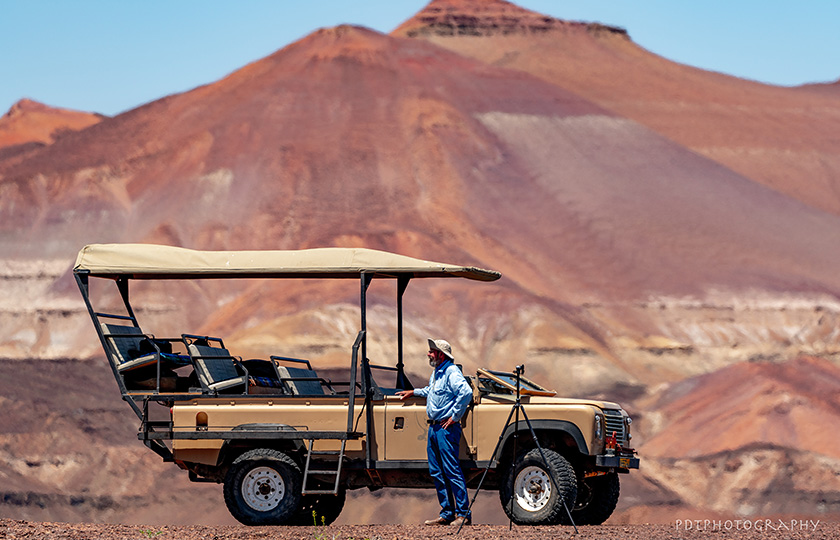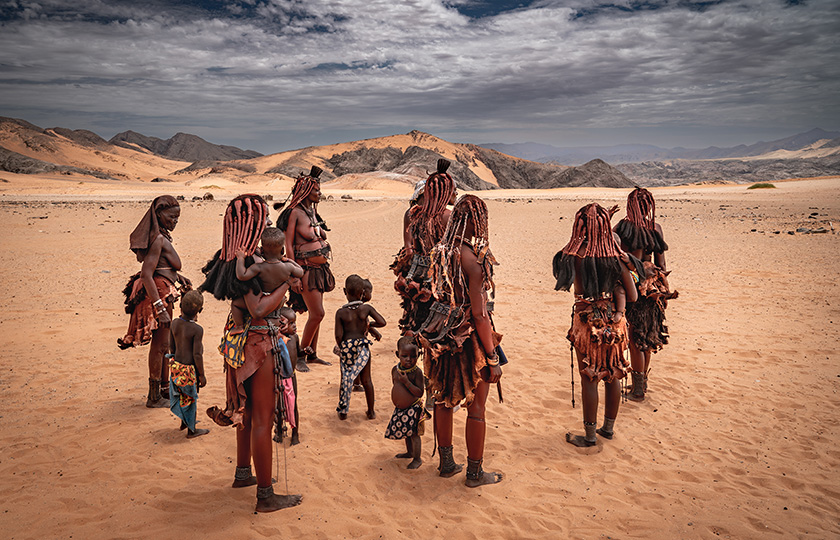As far as sustainability goes, each member of Naturally Namibia plays a big role, each in their own way, but the Schoeman family legacy can lay claim to a leading role in the creation of the Skeleton Coast National Park, which is quite an incredible feat.
A family-run business first founded by Louw Schoeman, the Schoemans’ safari company continues to offer adventurous travellers the unique combination of air and land adventure to explore the shipwrecks, rolling sand dunes and desolate landscapes of this hauntingly beautiful stretch of coastline. There is, quite simply, nothing like it. In fact, Namibia is the only continental country in the world that has its entire coastline protected as a national park and to be afforded the opportunity to see it all by air is frankly mind-blowing.
All the members of the Schoeman family literally grew up there, so they have the very secrets of the Skeleton Coast etched on their souls and are happy and willing to share their immense knowledge and love of the coast with anyone lucky enough to visit.

Run by the renowned Schoeman family, Skeleton Coast Safaris offers an extraordinary opportunity to delve into the untamed wonders of Namibia’s northwest region
Beginning at Eros airport, Windhoek, and using low-level flying light aircraft to transport visitors from one area to the next, the Skeleton Coast Safari makes its way up through some of Africa’s oldest surviving wildernesses. At selected landing spots (some in extremely inaccessible areas for most people), travellers then continue to explore the coast and further inland by Land Rover or on foot.
Louw Schoeman, initially came to know the Skeleton Coast through his clients who were involved in prospecting, and researching the feasibility of a new harbour in the area. Plans for the latter thankfully fell through, by which time Louw knew, and loved, the area very well. His thoughts turned to conservation, and he was instrumental in the proclamation of the Skeleton Coast Park in 1971. The Schoeman offspring spent their childhood days (early sixties) exploring and playing among the remains of old wooden shipwrecks and natural wonders of the Skeleton Coast. When Louw officially started Skeleton Coast Safaris in 1977, the then-teenaged Schoeman offspring often accompanied him on his safari trips. From their father, they learnt to love and understand the complexity of the desert and all it offered. They also gleaned from him the more practical skills of driving in the roaring dunes, and how to introduce the wonders of this amazing desert to perfect strangers.

Guests are taken on excursions by Land Rover to be introduced to the scenic and ecological aspects of the environment with its wide diversity of flora and fauna
The Schoeman children, who in the intervening years acquired and expanded on their father’s expertise and vast background knowledge of the Skeleton Coast and adjacent regions, took over management of the enterprise in 1994. The late Louw Schoeman’s enthusiasm and passion for the desert had clearly rubbed off on his offspring.
Today, older and wiser for it, the Schoemans are rated as experts on the Skeleton Coast and semi-desert areas of Namibia. They have followed in the footsteps of their father who, at the time, was considered the pioneer of ecotourism in Namibia. They all fully believe that the future of country not only rests with tourism and the preservation of wildlife, but also in protecting the natural resources and wilderness areas of Namibia.
Just as much part of the Skeleton Coast patrons as the Schoemans, are the people they have worked together with. The families that worked and lived alongside the Schoemans for years, and whom all have generations that have taken over from them. One example, amongst many, is Janson Kasano, who has been part of the Skeleton Coast Safari family for over 35 years.
Each trip is usually escorted by one of the Schoeman family, who acts as pilot, driver and expert guide. You spend every night in a different area, sleeping in dome tents at tiny permanent camps – Kuidas Camp, beside the dry Huab River; Leylandsdrift Camp overlooking a spring in the Hoarusib River; and Kunene River Camp, on the lush banks of the Kunene River.
Originally, under South African mandate, inland from the coast, the surrounding areas became a number of Homelands, where different tribes had autonomous governance and ownership of their areas. When Namibian Independence took place, this all changed to State-owned land and subsequently the local communities instead were all given conservancy rights, so that everyone could benefit from the land and wildlife, whilst making sure it was all protected. This resulted in the Joint Ventures that Skeleton Coast Safaris and the local conservancies have held for years and that has flourished. Everyone knows the sustainability of the Skeleton Coast Park and its Hinterland is paramount to all involved and the ecosystem that is required.

Adjoining the northern section of the Skeleton Coast Park is Kaokoland, a rugged region inhabited by the Himba people, who still dress and live according to ancient customs and traditions
All the conservancies are run by Previously Disadvantaged People and in their Joint Ventures with companies like Skeleton Coast Safaris, everyone has an invested responsibility. Everyone who is employed under the Skeleton Coast Safaris banner is from one of the conservancies.
On top and above the contingency partners that are involved and benefitting from Skeleton Coast Safaris, are five Himba tribe families who live across inland from the coast. The Himba are indigenous people and are hunter-gatherers. Culturally distinguishable from the Herero people, the Himba are semi-nomadic, pastoralist people but may have to move within the year depending on rainfall and to where there is access to water. Skeleton Coast Safaris makes sure that these families are looked after and contented.
Written by Robbie Stammers
The Schoemans are a rare breed of people who love the diverse people and the unique wilderness that the Skeleton Coast offers. Bertus, Andre, Leon and Henk all carry the legacy of their late father, Louw and make sure that this unique coastline remains sustainable and beautiful for many years to come. Skeleton Coast Safaris is run together with their spouses – especially Helga and Ute, and continuity is assured by the up-and-coming next generation, thus far Michael, Kyle and Cindel.
